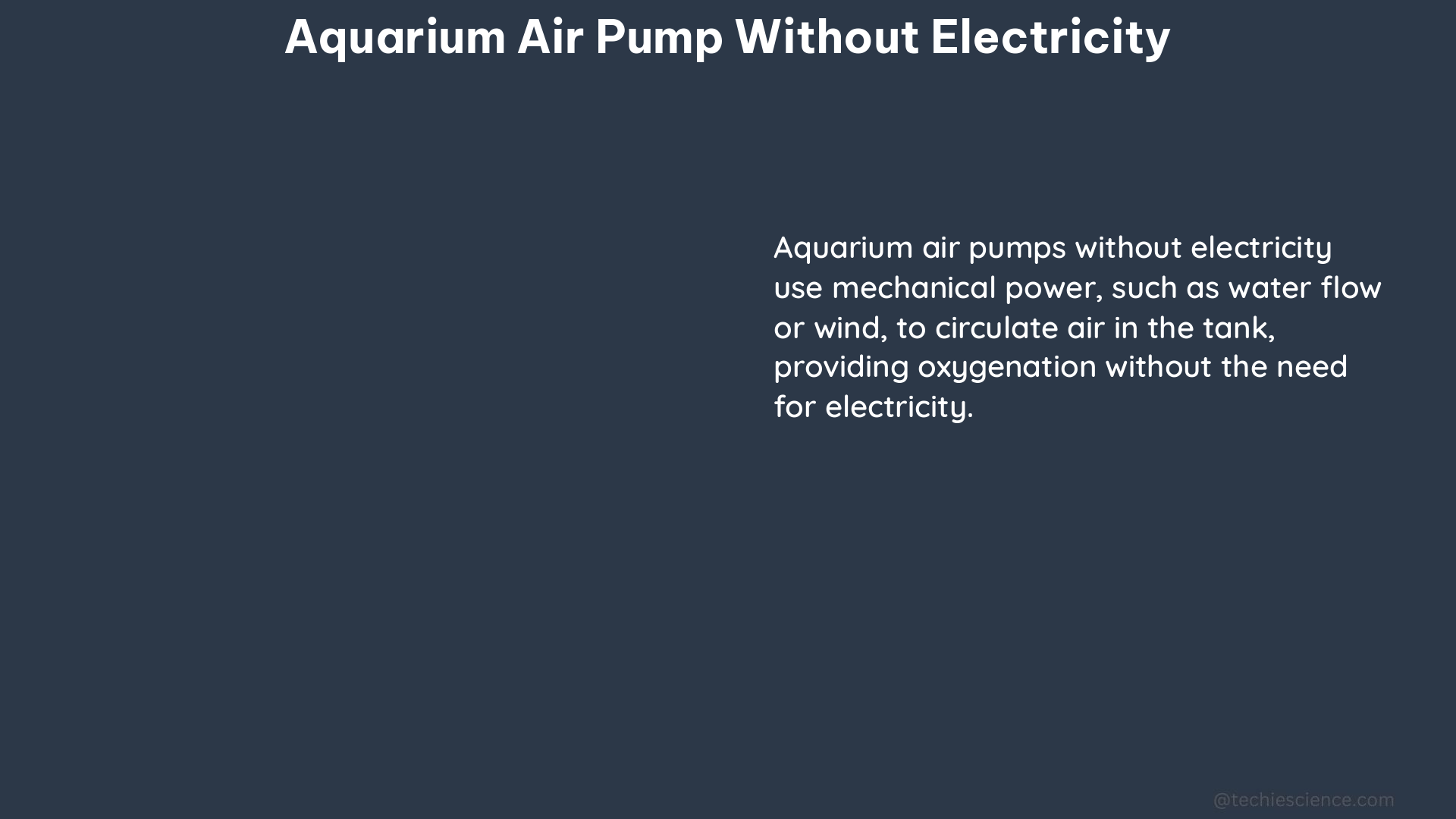Aquarium enthusiasts often face the challenge of maintaining their aquatic ecosystems during power outages. In such situations, a reliable air pump is essential to ensure the well-being of their aquatic pets. Fortunately, there are several DIY solutions available that can provide air circulation without the need for electricity. In this comprehensive guide, we will explore the technical specifications, step-by-step instructions, and key considerations for creating a DIY aquarium air pump without electricity.
Technical Specifications of DIY Aquarium Air Pumps Without Electricity
At the heart of a DIY aquarium air pump without electricity is a 12V DC motor, fan, or water pump. These components are typically powered by a 12V rechargeable battery, such as a 12V 7Ah battery, which can provide up to 5 hours of continuous operation on a single charge.
The airflow rate of these DIY air pumps can be adjusted by manipulating the motor or fan speed, or by altering the water level in a plastic bottle used as part of the design. Depending on the specific design and battery capacity, the airflow rate can be fine-tuned to meet the needs of your aquarium.
To provide a more detailed overview, here is a table summarizing the key technical specifications of DIY aquarium air pumps without electricity:
| Component | Specification |
|---|---|
| Power Source | 12V DC motor, fan, or water pump |
| Battery | 12V 7Ah rechargeable battery |
| Operational Time | 2-5 hours on a single charge |
| Airflow Rate Adjustment | Motor/fan speed control or water level adjustment |
Step-by-Step Guide to Building a DIY Aquarium Air Pump Without Electricity

Creating a DIY aquarium air pump without electricity is a straightforward process that can be completed with readily available materials. Here’s a step-by-step guide to help you get started:
-
Gather the Materials: Collect the necessary components, including a 12V DC motor, fan, or water pump, a 12V 7Ah rechargeable battery, a plastic bottle, and tubing to direct the airflow into the aquarium.
-
Prepare the Plastic Bottle: Select a suitable plastic bottle and make the necessary modifications. This may involve cutting the bottle to create a chamber for the air pump components or drilling holes to allow for airflow.
-
Install the Air Pump Components: Securely mount the 12V DC motor, fan, or water pump inside the plastic bottle. Ensure that the airflow path is unobstructed and that the components are properly connected to the battery.
-
Connect the Tubing: Attach the tubing to the air pump’s output, ensuring a secure and airtight connection. Route the tubing to the desired location in your aquarium.
-
Test and Adjust the Air Pump: Connect the battery and turn on the air pump. Observe the airflow and make any necessary adjustments to the motor/fan speed or water level to achieve the desired airflow rate.
-
Secure the Air Pump: Once you’re satisfied with the performance, secure the air pump and battery in a stable position near your aquarium, ensuring that the tubing is not kinked or obstructed.
-
Maintain and Recharge the Battery: Regularly monitor the battery level and recharge the 12V 7Ah battery as needed to ensure continuous operation during power outages.
By following these steps, you can create a reliable and adjustable DIY aquarium air pump that can operate without the need for electricity, providing your aquatic pets with the necessary oxygen and water circulation during emergencies.
Key Considerations for DIY Aquarium Air Pumps Without Electricity
When building a DIY aquarium air pump without electricity, there are several important factors to consider:
-
Battery Capacity and Runtime: Ensure that the 12V 7Ah battery you choose can provide sufficient runtime for your aquarium’s needs. Consider the size of your aquarium and the airflow requirements when selecting the battery.
-
Airflow Rate Adjustment: Experiment with different methods to control the airflow rate, such as adjusting the motor/fan speed or the water level in the plastic bottle. This will allow you to fine-tune the air pump’s performance to match your aquarium’s specific requirements.
-
Noise and Vibration: Depending on the design and components used, your DIY air pump may produce some noise or vibration. Consider ways to minimize these, such as using dampening materials or securing the components firmly in place.
-
Maintenance and Reliability: Regularly inspect your DIY air pump for any wear or damage, and be prepared to replace components as needed to ensure reliable operation during power outages.
-
Aquarium Compatibility: Ensure that the materials used in your DIY air pump are aquarium-safe and will not leach any harmful substances into the water.
By keeping these key considerations in mind, you can create a DIY aquarium air pump without electricity that is both effective and reliable, providing your aquatic pets with the necessary oxygen and water circulation during power outages.
Conclusion
In conclusion, building a DIY aquarium air pump without electricity is a practical and cost-effective solution for maintaining your aquatic ecosystem during power outages. By leveraging readily available materials and following the step-by-step guide provided, you can create a reliable air pump that can operate for several hours on a single battery charge. Remember to consider the technical specifications, key design factors, and maintenance requirements to ensure the long-term success of your DIY air pump. With a little effort and creativity, you can keep your aquarium thriving even when the power goes out.
References
- Free energy air pump without electricity-DIY
- DIY Air Pump without Electricity step by step
- DIY AIRPUMP without electricity FOR fish tank
- Free Energy-Air Pump Without Electricity-DIY
- DIY aquarium air pump without electricity
